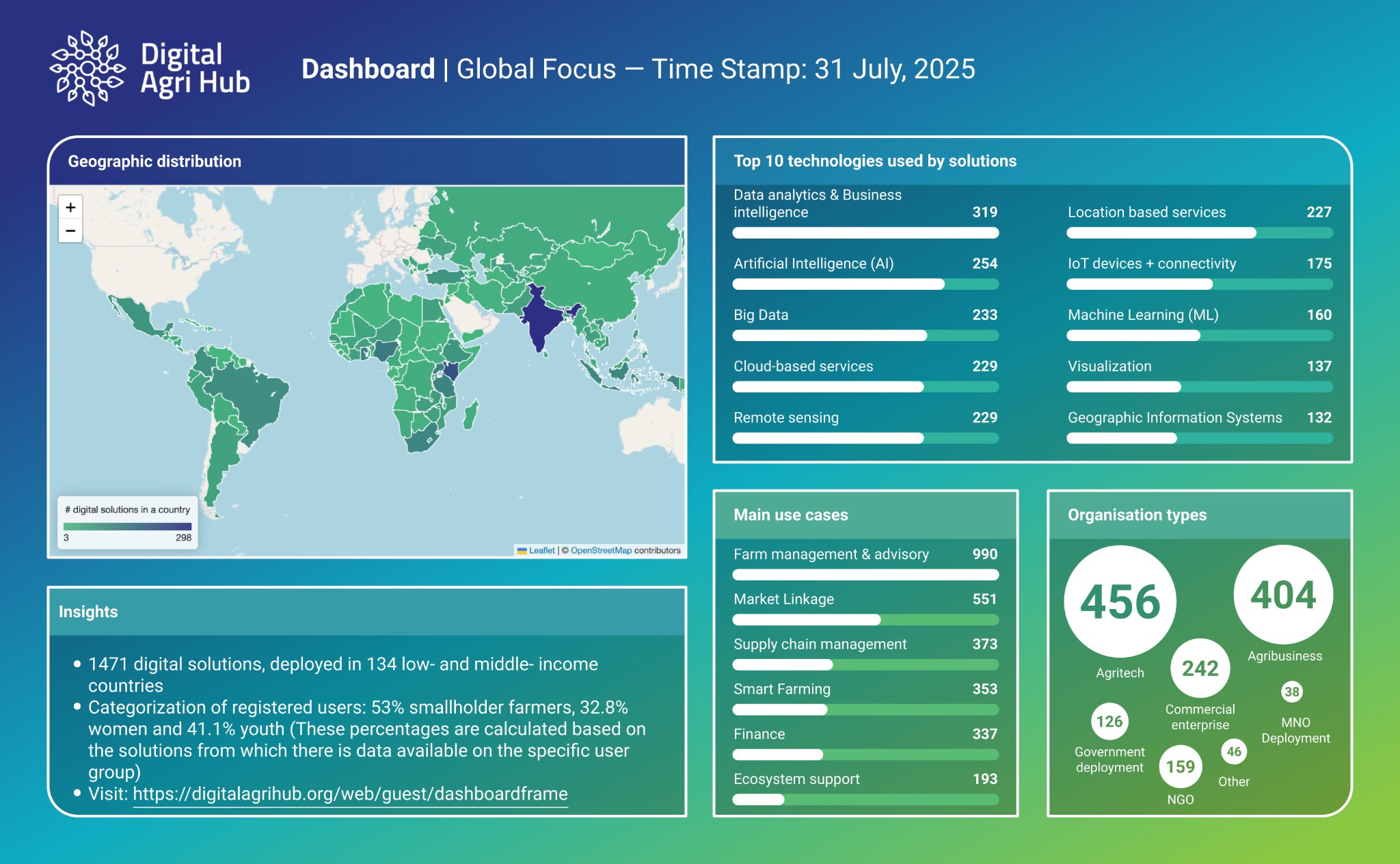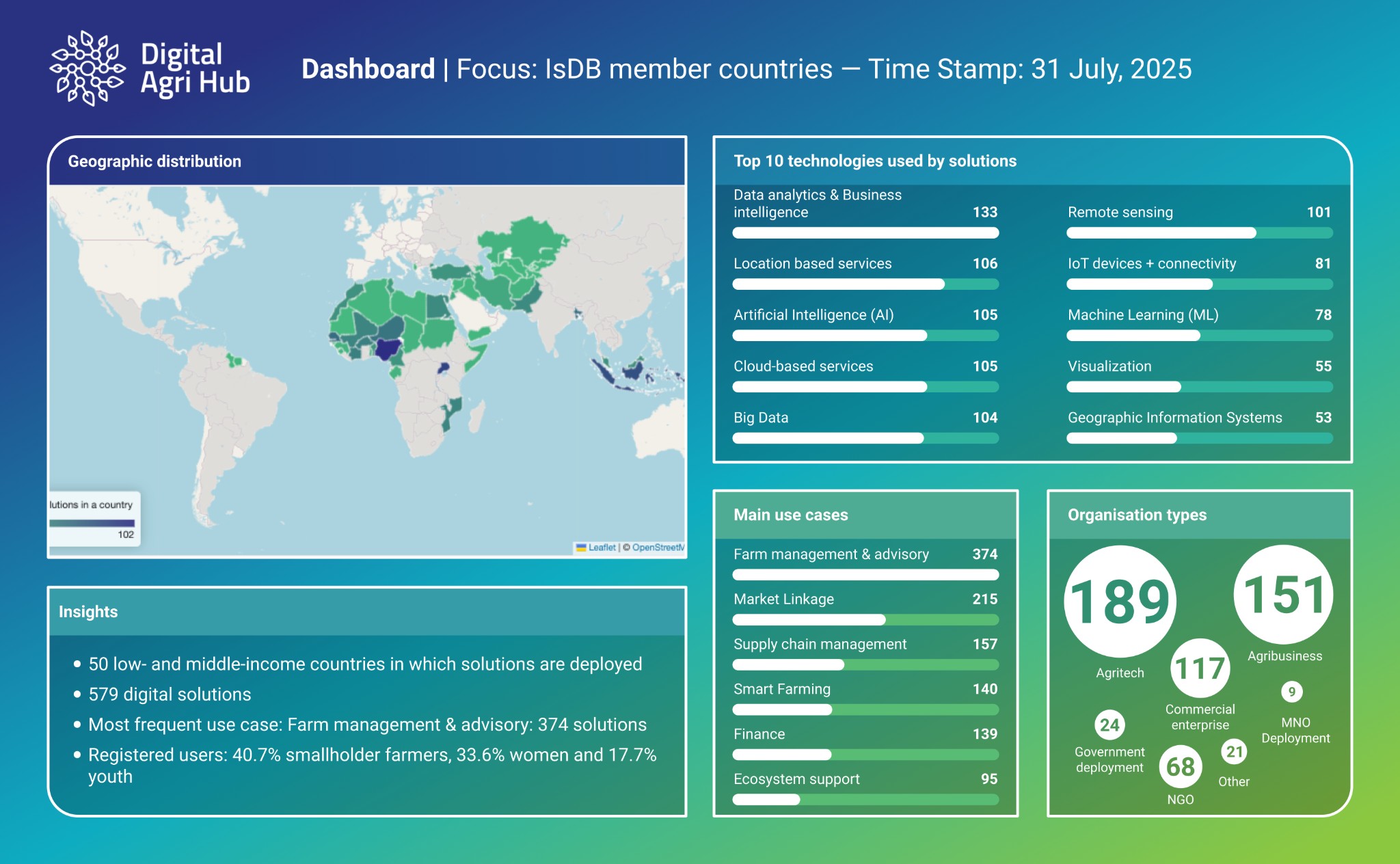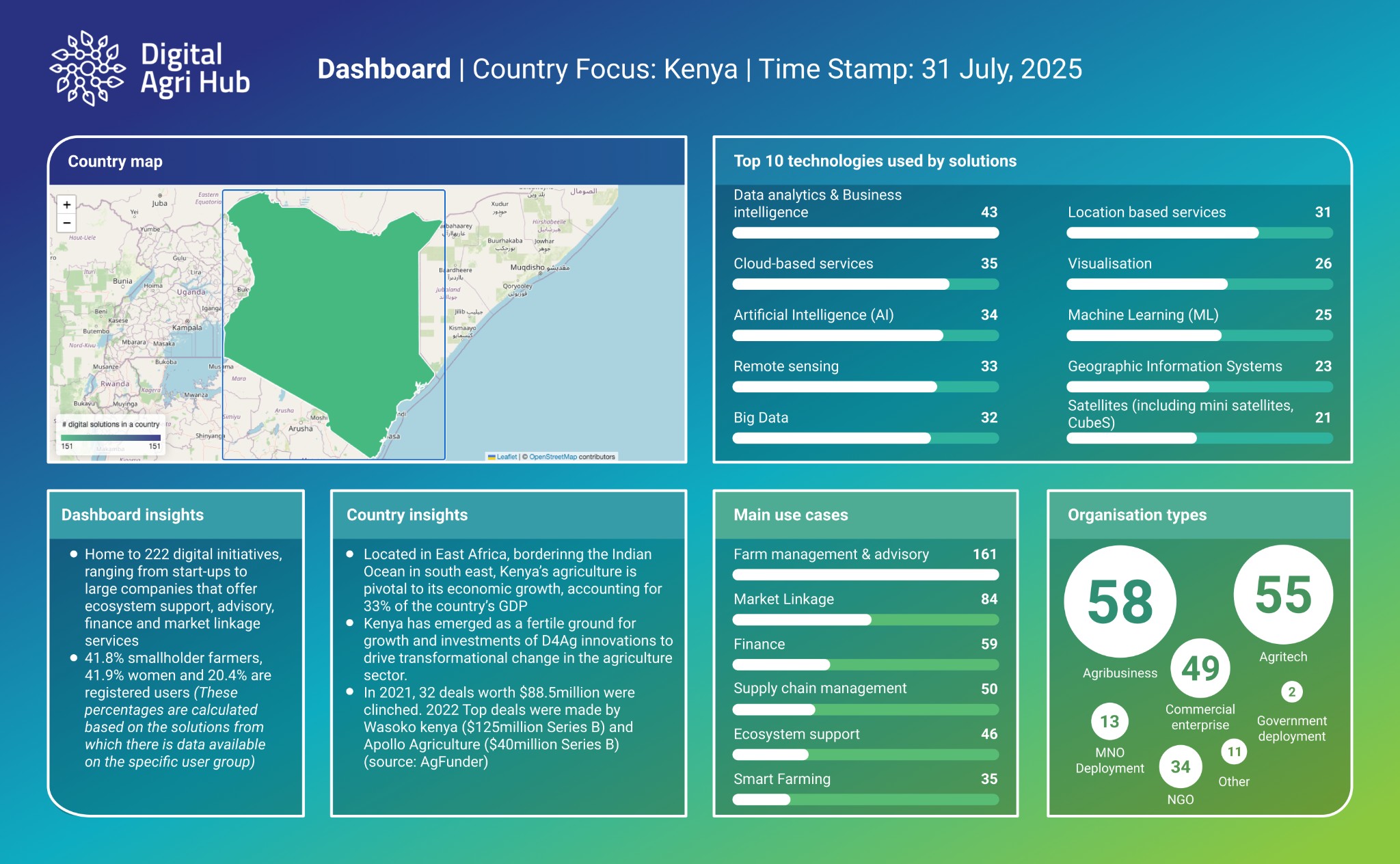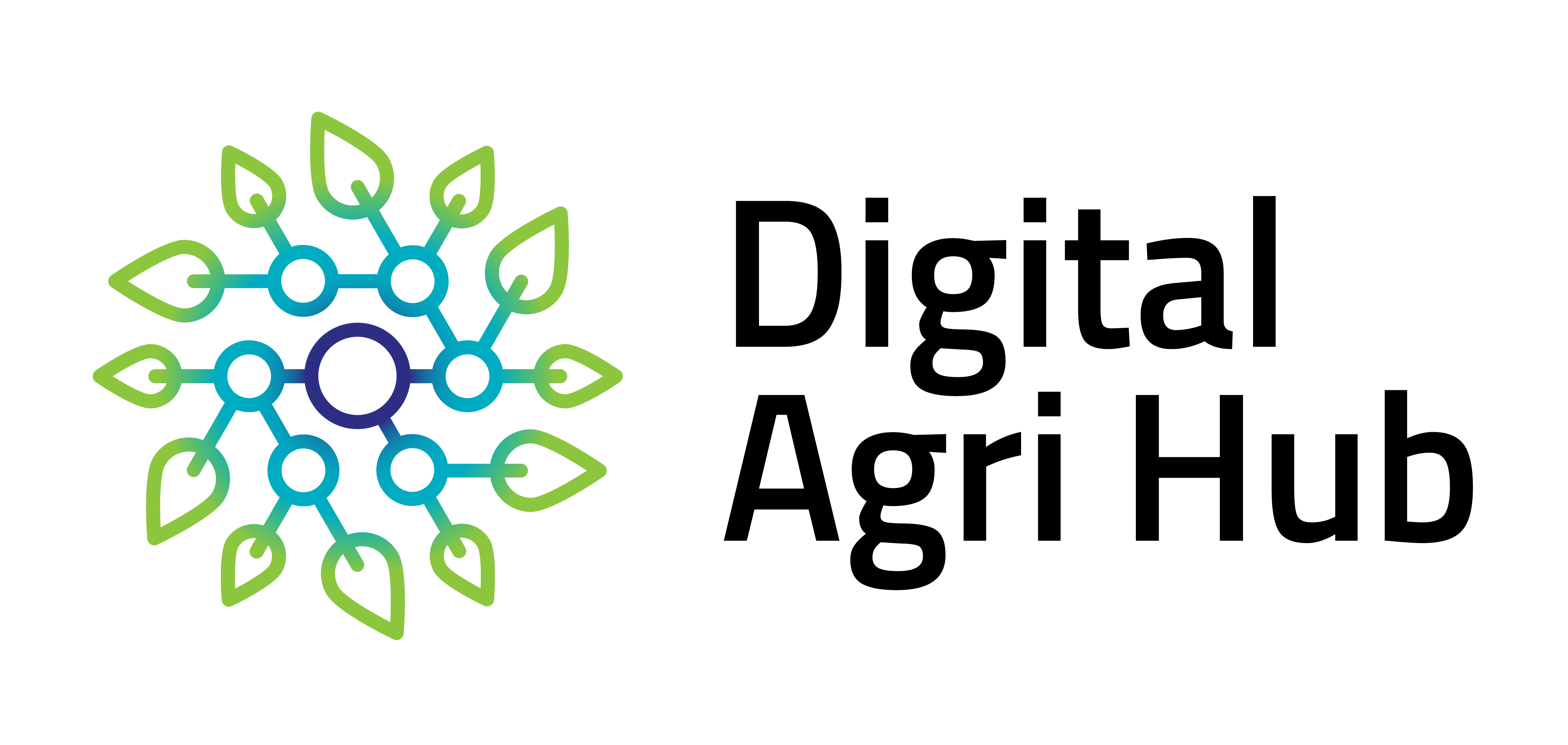Infographics
Explore how digital agriculture is evolving across low- and middle-income countries through three interconnected layers of insight
At the global, regional, and country levels, the infographics reveal how a range of digital technologies, including AI, blockchain, drones, GIS, and remote sensing, are being deployed. They highlight the types of organisations driving these innovations, the channels used to deliver them—such as mobile apps, web platforms, desktop tools, and the use cases they support, from farm management and advisory services to market linkages, financial services, supply chain operations, and ecosystem development.
Global level
Gain a high-level perspective on the state of digital agriculture across 134 low- and middle-income countries.
This layer aggregates insights on the types of digital technologies being deployed, such as artificial intelligence, blockchain, GIS, drones, and remote sensing, etc. and maps how different channels like mobile apps, web platforms, etc. are used to deliver services. Users can explore global trends in organisation types driving innovation and the key agricultural use cases these solutions address, including advisory services, market linkages, finance, supply chains, and ecosystem support.

Regional level
Dive into regional dashboards aligned with FAO’s SOFA regions, offering geographically clustered insights tailored to local agro-ecological and socio-economic conditions.
At this level, users can explore how digital agriculture is evolving across regions, with detailed data on the prevalence of specific technologies, delivery channels, and organisation types operating in these areas. The dashboards also showcase region-specific use cases, shedding light on how digital innovations are being adapted to support farmers, agribusinesses, and value chains across diverse contexts.

Country level
Examine focused dashboards that highlight the digital agriculture landscape within individual countries.
Users can discover which technologies and tools are actively being used on the ground, which organisations are behind them, and how services are delivered through digital channels. This level offers concrete examples of digital solutions addressing specific agricultural challenges, from farm-level decision-making and financial access to market integration, input supply, and agricultural advisory services, offering a grounded view of digital transformation at the national scale.







